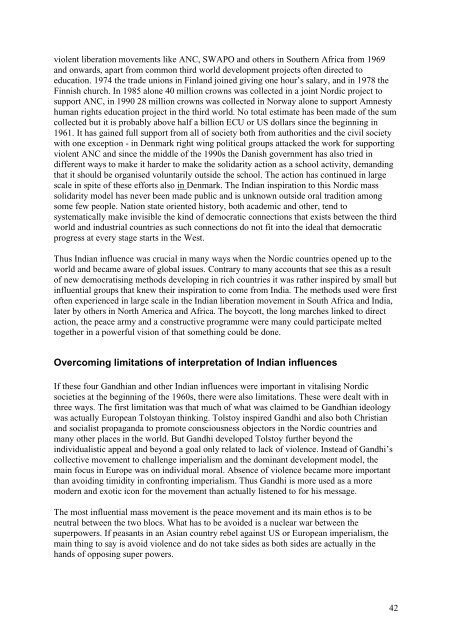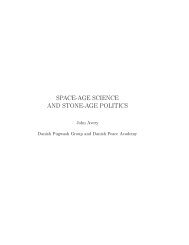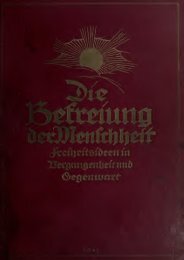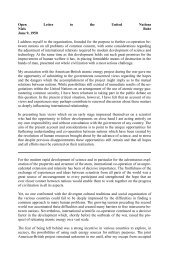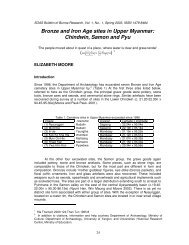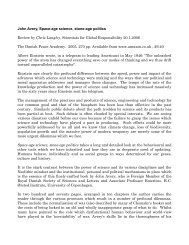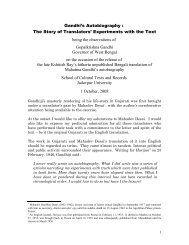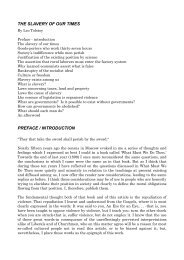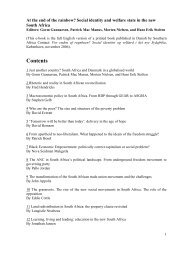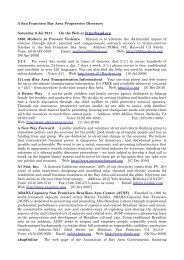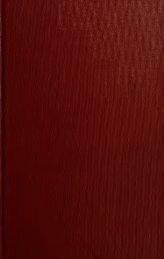Indian-Nordic Encounters 1917-2006 - Det danske Fredsakademi
Indian-Nordic Encounters 1917-2006 - Det danske Fredsakademi
Indian-Nordic Encounters 1917-2006 - Det danske Fredsakademi
You also want an ePaper? Increase the reach of your titles
YUMPU automatically turns print PDFs into web optimized ePapers that Google loves.
violent liberation movements like ANC, SWAPO and others in Southern Africa from 1969<br />
and onwards, apart from common third world development projects often directed to<br />
education. 1974 the trade unions in Finland joined giving one hour’s salary, and in 1978 the<br />
Finnish church. In 1985 alone 40 million crowns was collected in a joint <strong>Nordic</strong> project to<br />
support ANC, in 1990 28 million crowns was collected in Norway alone to support Amnesty<br />
human rights education project in the third world. No total estimate has been made of the sum<br />
collected but it is probably above half a billion ECU or US dollars since the beginning in<br />
1961. It has gained full support from all of society both from authorities and the civil society<br />
with one exception - in Denmark right wing political groups attacked the work for supporting<br />
violent ANC and since the middle of the 1990s the Danish government has also tried in<br />
different ways to make it harder to make the solidarity action as a school activity, demanding<br />
that it should be organised voluntarily outside the school. The action has continued in large<br />
scale in spite of these efforts also in Denmark. The <strong>Indian</strong> inspiration to this <strong>Nordic</strong> mass<br />
solidarity model has never been made public and is unknown outside oral tradition among<br />
some few people. Nation state oriented history, both academic and other, tend to<br />
systematically make invisible the kind of democratic connections that exists between the third<br />
world and industrial countries as such connections do not fit into the ideal that democratic<br />
progress at every stage starts in the West.<br />
Thus <strong>Indian</strong> influence was crucial in many ways when the <strong>Nordic</strong> countries opened up to the<br />
world and became aware of global issues. Contrary to many accounts that see this as a result<br />
of new democratising methods developing in rich countries it was rather inspired by small but<br />
influential groups that knew their inspiration to come from India. The methods used were first<br />
often experienced in large scale in the <strong>Indian</strong> liberation movement in South Africa and India,<br />
later by others in North America and Africa. The boycott, the long marches linked to direct<br />
action, the peace army and a constructive programme were many could participate melted<br />
together in a powerful vision of that something could be done.<br />
Overcoming limitations of interpretation of <strong>Indian</strong> influences<br />
If these four Gandhian and other <strong>Indian</strong> influences were important in vitalising <strong>Nordic</strong><br />
societies at the beginning of the 1960s, there were also limitations. These were dealt with in<br />
three ways. The first limitation was that much of what was claimed to be Gandhian ideology<br />
was actually European Tolstoyan thinking. Tolstoy inspired Gandhi and also both Christian<br />
and socialist propaganda to promote consciousness objectors in the <strong>Nordic</strong> countries and<br />
many other places in the world. But Gandhi developed Tolstoy further beyond the<br />
individualistic appeal and beyond a goal only related to lack of violence. Instead of Gandhi’s<br />
collective movement to challenge imperialism and the dominant development model, the<br />
main focus in Europe was on individual moral. Absence of violence became more important<br />
than avoiding timidity in confronting imperialism. Thus Gandhi is more used as a more<br />
modern and exotic icon for the movement than actually listened to for his message.<br />
The most influential mass movement is the peace movement and its main ethos is to be<br />
neutral between the two blocs. What has to be avoided is a nuclear war between the<br />
superpowers. If peasants in an Asian country rebel against US or European imperialism, the<br />
main thing to say is avoid violence and do not take sides as both sides are actually in the<br />
hands of opposing super powers.<br />
42


